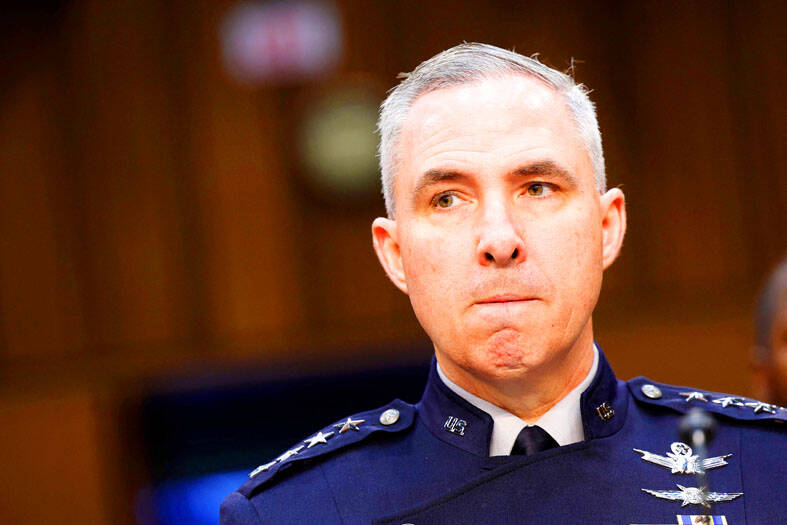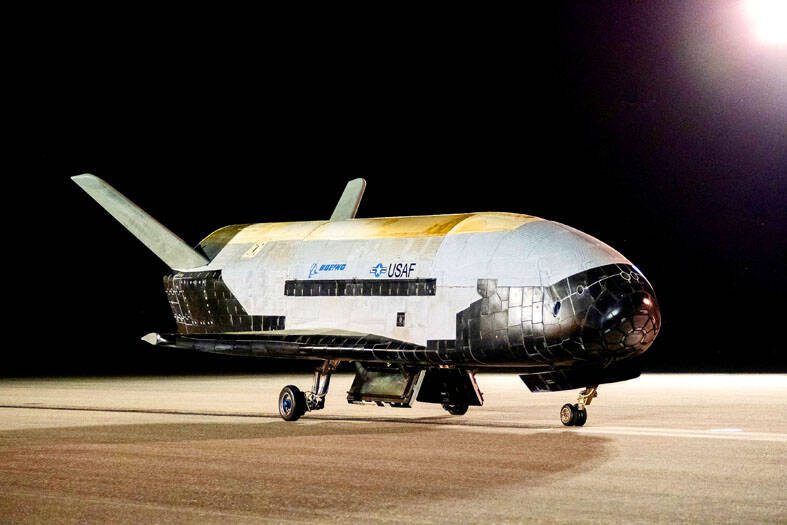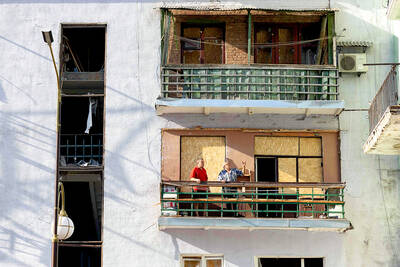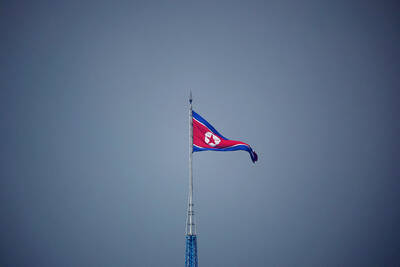China’s shadowy, uncrewed reusable spacecraft, which launches atop a rocket booster and lands at a secretive military airfield, is most likely testing technology, but could also be used for manipulating or retrieving satellites, experts said.
The spacecraft, on its third mission, was last month observed releasing an object, moving several kilometers away and then maneuvering back to within a few hundred meters of it.
“It’s obvious that it has a military application, including, for example, closely inspecting objects of the enemy or disabling them, but it also has non-military applications,” said Marco Langbroek, a lecturer in optical space situational awareness at Delft University of Technology in the Netherlands.

Photo: AFP
“Gaining experience with this kind of grab and release is good if you want to for instance ... refuel your own satellites,” he said.
As militaries worldwide develop complex satellite networks, a reusable spacecraft that can interfere with them could have immense value, Langbroek and other experts said.
China has never disclosed what technologies the spacecraft has tested, nor has the spaceplane been publicly photographed since it began operating.

Photo: Reuters
The US first launched its uncrewed Boeing X-37B spaceplane in 2010, while Russia has recently launched several satellites that US officials suspect might be weapons, a charge that Russia has denied.
China’s spaceplane is most likely testing technology, much like the X-37B, said Victoria Samson, chief director of space security and stability at the Secure World Foundation think tank in Washington.
“I don’t think that either has a whole lot of military utility, to be honest,” Samson said. “I am guessing that both are technology demonstrators.”
The Chinese Ministry of National Defense did not immediately respond to a request for comment.
Xinhua news agency has reported the launches and landings of the spaceplane, which it refers to as a “reusable test spacecraft.”
The current flight of the Chinese spaceplane began in December last year. The previous mission, which also involved putting a separate object in space and retrieving it, launched in August 2022 and lasted 276 days, tracking data showed.
Its first flight was in September 2020 and lasted two days.
“We see breathtaking advancements by the People’s Republic of China in space,” said General Stephen Whiting, commander of the US Space Command, adding that his organization did not know what objects the spaceplane had released.
“Any space activity that they undertake, we assume has some dual use in the national security realm,” Whiting said. “We’re always interested in understanding what could that dual use be, and trying to make sure that we have a good knowledge of that.”

‘HYANGDO’: A South Korean lawmaker said there was no credible evidence to support rumors that Kim Jong-un has a son with a disability or who is studying abroad South Korea’s spy agency yesterday said that North Korean leader Kim Jong-un’s daughter, Kim Ju-ae, who last week accompanied him on a high-profile visit to Beijing, is understood to be his recognized successor. The teenager drew global attention when she made her first official overseas trip with her father, as he met with Chinese President Xi Jinping (習近平) and Russian President Vladimir Putin. Analysts have long seen her as Kim’s likely successor, although some have suggested she has an older brother who is being secretly groomed as the next leader. The South Korean National Intelligence Service (NIS) “assesses that she [Kim Ju-ae]

In the week before his fatal shooting, right-wing US political activist Charlie Kirk cheered the boom of conservative young men in South Korea and warned about a “globalist menace” in Tokyo on his first speaking tour of Asia. Kirk, 31, who helped amplify US President Donald Trump’s agenda to young voters with often inflammatory rhetoric focused on issues such as gender and immigration, was shot in the neck on Wednesday at a speaking event at a Utah university. In Seoul on Friday last week, he spoke about how he “brought Trump to victory,” while addressing Build Up Korea 2025, a conservative conference

DEADLOCK: Putin has vowed to continue fighting unless Ukraine cedes more land, while talks have been paused with no immediate results expected, the Kremlin said Russia on Friday said that peace talks with Kyiv were on “pause” as Ukrainian President Volodymyr Zelenskiy warned that Russian President Vladimir Putin still wanted to capture the whole of Ukraine. Meanwhile, US President Donald Trump said that he was running out of patience with Putin, and the NATO alliance said it would bolster its eastern front after Russian drones were shot down in Polish airspace this week. The latest blow to faltering diplomacy came as Russia’s army staged major military drills with its key ally Belarus. Despite Trump forcing the warring sides to hold direct talks and hosting Putin in Alaska, there

North Korea has executed people for watching or distributing foreign television shows, including popular South Korean dramas, as part of an intensifying crackdown on personal freedoms, a UN human rights report said on Friday. Surveillance has grown more pervasive since 2014 with the help of new technologies, while punishments have become harsher — including the introduction of the death penalty for offences such as sharing foreign TV dramas, the report said. The curbs make North Korea the most restrictive country in the world, said the 14-page UN report, which was based on interviews with more than 300 witnesses and victims who had